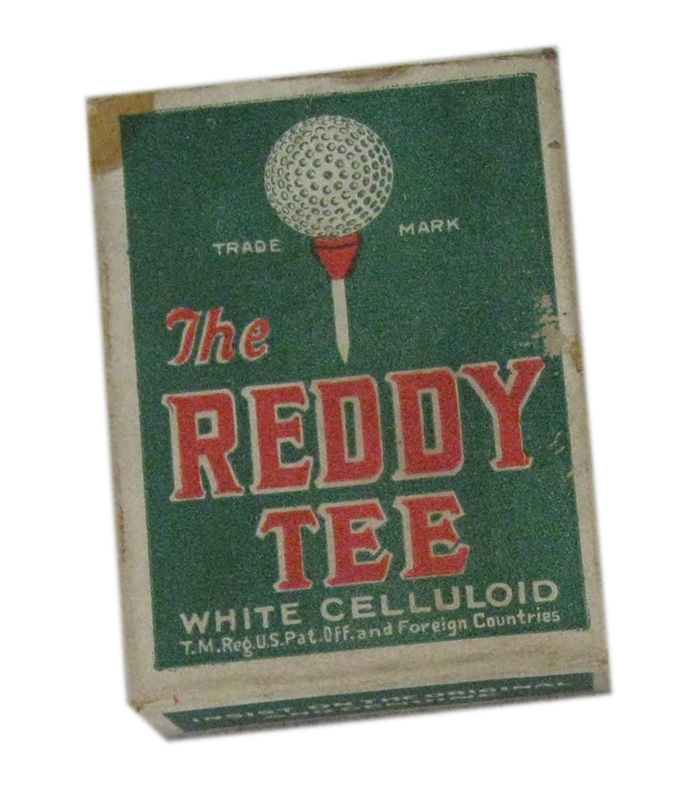
Origin of a Tee
In golf, a tee is normally used for the first stroke of each hole. Teeing the ball is allowed only on the first shot of a hole, called the tee shot, and is illegal for any other shot. The development of the tee was the last major change to the rules of golf. This explains the historical name tee boxes for what is today known as teeing ground.
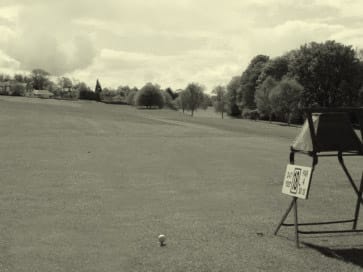 In the early days of golf, golf tees as we know them today were not part of the game. To elevate the ball for a drive, one had to build a tiny mound of dirt or sand and balance the ball on top. Before this, golf balls were teed up on little heaps of sand that were provided in boxes. This was messy and towels and water were provided to wash the golfers’ hands as they are today to wash golf balls. Often caddies would scoop out sand from the bottom of the hole to make the tee and this caused the hole to deteriorate. Clubs issued reminders that sand should be taken from elsewhere.
In the early days of golf, golf tees as we know them today were not part of the game. To elevate the ball for a drive, one had to build a tiny mound of dirt or sand and balance the ball on top. Before this, golf balls were teed up on little heaps of sand that were provided in boxes. This was messy and towels and water were provided to wash the golfers’ hands as they are today to wash golf balls. Often caddies would scoop out sand from the bottom of the hole to make the tee and this caused the hole to deteriorate. Clubs issued reminders that sand should be taken from elsewhere.
The earliest golf tees rested flat on the ground and had a raised portion to prop up the ball.
The first patent for this kind of tee is dated 1889 and was issued to Scotsmen William Bloxsom and Arthur Douglas.
The first known tee to pierce the ground was a rubber-topped peg sold commercially as the “Perfectum.” This was patented in 1892 by Percy Ellis of England.
In 1899, African-American dentist Dr. George Franklin Grant obtained a patent for an “improved golf tee.” This tee consisted of a wood cone with a rubber sleeve to support the ball, but it is not known to have ever been marketed.
Throughout the end of the 19th Century and the beginning of the 20th Century, golfers began trying to create re-usable tees, using cork, paper or rubber. (Although the crosse (chole) players have graduated to using screw caps as their tees, early “colf” and later “kolf” had died out before anyone thought of developing more sophisticated tees.)
These and other variations failed to catch on, as most golfers—whether because of tradition, habit or concerns about the rules—continued using heaps of sand. It took a strong marketing effort by Dr. William Lowell, Sr. in the 1920s to bring manufactured tees into widespread use.
Bye-Bye Dirt!
The first tee to penetrate the ground was the “Perfectum” tee, for which a British patent was granted in 1892 to Percy Ellis. It comprised a rubber circle with a metal spike that was pushed into the ground. A variation of this, the “Victor” tee, with a cup-shaped rubber top connected to a ground spike was patented by PM Matthews of Scotland in 1897.
Dr. William Lowell, Sr. first made 5,000 tees, that were stained green, but he soon changed to red, to make them more distinctive and named them “Reddy Tees.” In 1922, Walter Hagen and Joe Kirkwood, Sr. used their tees during their exhibitions. The Reddy Tee was patented on May 13, 1925, but in 1922 he signed a deal with the A.G. Spalding Company for 24 dozen. By 1925, he was selling $100,000 worth of tees, and they were being made of celluloid.
It was copied around the world and remains the most common type of golf tee.
The ball must be teed not nearer the hole than eight nor farther than twelve club lengths, except where special ground has been marked by the Conservator of the Links, which shall be considered the ‘teeing ground,’ and the balls shall be teed within, and not in advance of, such marks.RULES FOR THE GAME OF GOLF as it is played by the Royal & Ancient Golf Club of St Andrews over the Links. September 1875.
Because of the Reddy Tee’s unprecedented acceptance at both the professional and amateur levels, Lowell was, for some time, assumed to have been the inventor of the golf tee.
–

Find Your Tee

The Right Tee
Finding the right tee is as simple as testing them out. That’s what I did. What I discovered rather quickly was that I was not fond of the classic wooden tee. They break too easily and they litter the teeing ground.
Classic Wooden Tee
When a ball is struck from a standard wooden tee, friction between the tee and the ball at the moment of impact can have a dramatic effect on both the distance and accuracy of your drives. This is true of deflection as well: the relatively hard lip of a standard wooden tee can redirect your ball slightly, imparting spin and sending it in the wrong direction. The Brush-T, for example, can grant you up to an extra four yards and 3 percent better accuracy! The epoch-3 was independently tested to deliver an extra 1.81 yards in distance and 2.34 yards more accuracy.
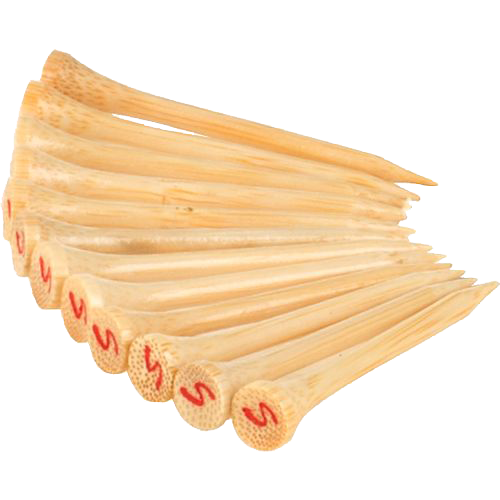 Stinger Tee » A Hybrid Wood Style
Stinger Tee » A Hybrid Wood Style
Stinger Tees are a high-performance alternative to traditional golf tees. Scientifically proven to increase ball speed and reduce spin, thousands of golfers choose Stinger Tees for:
Improved distance and accuracy with every swing
A classic tee look with added performance benefits
Strong bamboo construction that’s built to last
I found it a challenge to place the ball on the tee. and I didn’t find them as durable as the Epochs.
Crowned Tees
Crowned tees have become all the rage promising more distance off the tee by eliminating the friction caused by the head of the tee. They are performance tees with many touted as an environmentally friendly product.
The Epoch is the only performance tee with radius posts that span the width of a golf ball dimple. This unique feature creates the lowest coefficient of friction of any tee, eliminating deflection at impact and increasing ball speed and control off the tee.
BJ Maloy / Co-Founder of the Epoch Tee
Epoch Tees » Crown Style Tee
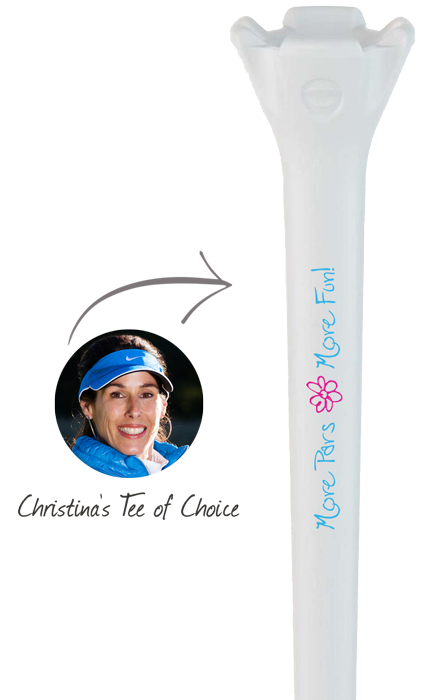 The Epoch-3 tee reduces tee-to-ball contact by about 90 percent over traditional wooden tees.
The Epoch-3 tee reduces tee-to-ball contact by about 90 percent over traditional wooden tees.
The first Epoch was introduced on the PGA TOUR in January 2004. Evolve Golf promised the tour players a better golf tee that would increase their ball launch speed, reduce spin, and provide pure control off the tee. A few players put the Epoch in play that first week. Fast forward to today, Epoch exceeded 100 wins on the major tours. Evolve Golf does not pay players to play the Epoch. They simply choose to tee up the Epoch when it matters the most.
The Epoch tees are durable and sturdy. Plus, the Epoch S-3 includes a visual line on the tee to keep you consistent with your tee-ups.
Check out Evolve Golf’Sweet Spot System that shows you exactly how high to tee it. This is great news for you girls that continually tee it too high.
Zero Friction Tees
Indestructible tees that give you 2-4 more yards? Cool. Sign me up! The Zero Friction™ Original 3-Prong Golf Tee has LESS RESISTANCE, which means MORE DISTANCE on the course. Its 3-prong top design significantly reduces the contact area between the golf ball and the tee, providing maximum distance and accuracy.
I tried them. I struggled with placing the ball on the tee. The 3-pronged system was pesky. Christina Ricci
Funny enough, the makers of Zero Friction listened and created a 5-prong system:
The Zero Friction™ ZFVictory™ 5-prong Performance Golf Tee has a patented 5-prong design that allows for reduced contact area between the ball and tee to produce longer, straighter drives. Shaped more like a traditional tee, the 5-prong design affords ease of ball placement on tee and tee into the ground.
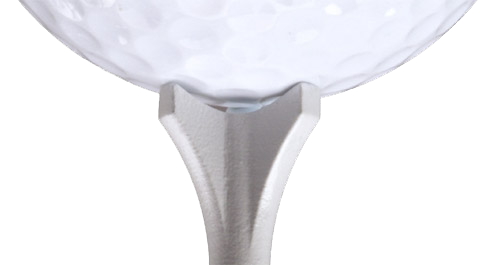
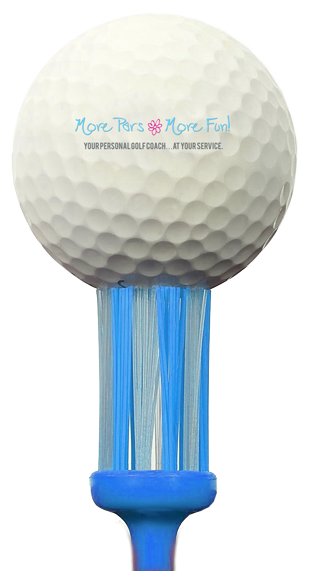 Brushed Tees
Brushed Tees
The innovative Brush-T performance golf tee allows you to tee your ball at a consistent height on flexible synthetic bristles that bend on impact, creating a feel of driving the ball off the air. Unlike a regular golf tee, the bristles on the brush tee provide significantly less resistance that produces dramatically longer and straighter drives.
How it Works:
Distance: The lightweight but sturdy Brush-T is based on a unique nylon bristle “cup” that supports the golf ball. The secret behind its success is the flexibility of the bristles, which allow the ball to be struck with a minimum of resistance and deflection. During the drive, your club is traveling at up to 98 miles per hour and anything that touches it at that speed is going to have an effect.
The theory behind the Stinger tee is the same as we’ve seen with the Epoch and Brush-T: less tee touches the ball, minimizing clubhead deflection and drag. The ball launches with less resistance and lower spin.
Erik J. Barzeski / Co-Founder of the Epoch Tee
The Brush-T bristles have been designed to do away with resistance from impact with the tee. The ball is supported largely by air, which means that the speed of the clubface at impact is concentrated so perfectly on the ball that the sheer kinetic energy helps create a longer and straighter shot.
Accuracy: Brush-T eliminates up to 2 percent of left or right deflection and that means greater accuracy for your shots. Over 300 yards a 2º deflection can make your shot up to 14 yards wide of the mark!
How to Use It:
Pull out the bristle preserver. To put the Brush-T into the ground, place your thumb into the center of the bristles and press downwards firmly
Each Brush-T includes a holder, bristle preserver, and ball marker
Sizes:
3 Wood: 2″
Driver: 2.2″
Oversize: 2.4″
XLT: 3.125
How to Tee it Up
When I shot this a few years back, I was using the pink Zero Frictions. Take note how I struggle a bit to tee it!
Tee It Right
A common culprit of popped shots or weak right ball flights off the tee, is an inappropriately teed ball.
Let’s examine the YES and NOs with your driver, woods, hybrids, and irons.
Driver
Driver requires an ascending strike. Good rule of thumb: Tee it up so half of the ball sits above the top of the driver. Tee it too low and you will most likely create too much spin, a distance and ball flight killer. Tee it too high and you may get underneath it and pop it up.
Woods
Tee it up so the crown of the tee is just above the turf. If the wood’s head is bigger than this one, tee it up a little bit higher. Watch out when teeing it up with your woods. This is not a driver.
Hybrids
With the hybrid’s head larger than an iron, I like to tee it up so the crown of the tee is just above the turf. Tee it too high and you’ll miss the sweet spot.
Irons
A driver requires an ascending strike, an iron does not. Tee it up so the ball sits just above the turf. With this set up, you’ll promote a descending strike. With the ball teed too high, it will be a challenge to strike down and through.

